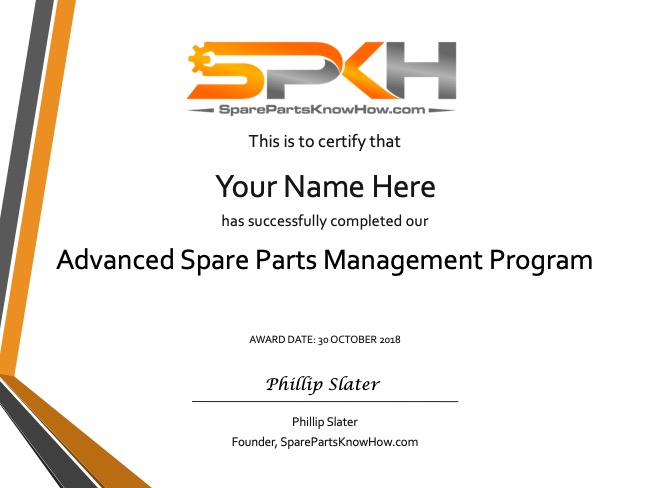Subject Area: Artificial Intelligence Problems
 In part one of this series on artificial intelligence I raised the idea that artificial intelligence will not solve your spare parts management problems.
In part one of this series on artificial intelligence I raised the idea that artificial intelligence will not solve your spare parts management problems.
In this article I discuss three main artificial intelligence problems.
Artificial Intelligence Problem 1
First, how can we be sure about how to ‘connect the dots’.
The successful use of AI requires an understanding of cause and effect BEFORE an event happens. A self-driving car needs to be programmed on how to respond, based on the data collected from its sensors. Just as people need to learn how to drive and respond to what they see and hear when in control of a vehicle.
This means that what we call AI is limited by our existing understanding. It doesn’t (yet) have a conscious ability to learn.
Which might be fine for ensuring safety with the future application of self-driving cars. But with equipment maintenance, and by extension, spare parts decision-making, there are too many unknowns.
Therefore, AI won’t, in the near term, really improve the ability to predict parts failures. AI applications will be able to tell you to replace parts but won’t really be predicting failure. As most parts failures are not due to wear or age there is a complexity here that we just don’t yet truly understand. Without that understanding we cannot program the algorithm.
Problem 2
Second, with spare parts management, IoT, Big Data, and by extension, AI are not enough to ensure good outcomes because those outcomes rely on much more than data. The key links here are people and process.
In practice, much spare parts decision-making can be described as ‘emotional’ rather than rational. That is, people know that they don’t know all that they need to know and so they decide to stock items or stock more of an item ‘just in case’. They over-stock on spare parts because they are seeking to avoid being the person who ‘let the team down’ and caused excessive downtime. This happens even if the probability of the additional parts being required is vanishingly small to non-existent. That is the ‘just in case’ part.
Regarding process, the issue isn’t just, is it defined, but also, is it followed? A simple example of this is when people over-ride the stock level suggestions from their software. In my experience this happens primarily because people don’t trust the results.
Problem 3
Lastly, there is the old maxim of ‘garbage in, garbage out’.
This expression was coined in the 1950’s but is still just as applicable today. In fact, with the vast amount of data being collected through the IoT it is perhaps even more relevant.
In relation to spare parts management, consider the impact of the following:
- the direct procurement of parts such that they don’t go through the data collection required for AI
- the hoarding of parts in workshops
- requisitioning more than required
- being slow to return those parts to the storeroom
- poorly programmed operational data collection
- not knowing what data to collect or what data is relevant
- how to weight the inputs
- and even the opportunistic replacement of a still functioning machine part during a maintenance shutdown created for other work.
These factors, and I am sure many more, lead to poor or inaccurate data.
Ultimately, no matter how potentially useful a tool may be, the output can only be as accurate as the data entered into it. This is one of the main artificial intelligence problems.
Through engineering and design development, equipment reliability continues to improve. In theory reducing the demand for spare parts.
Simultaneously, data connectivity and automation continue to improve the efficiency of the procurement and logistics associated with spare parts management.
However, as the volume of stock held, and consequently the value of working capital tied up in spare parts, continues to rely on factors that are themselves unreliable we cannot reasonably expect AI to solve our spare parts management problems in the near term.
Study at a pace and place that suits you
 The Advanced Spare Parts Management Course covers all the issues faced during the spare parts inventory management lifecycle.
The Advanced Spare Parts Management Course covers all the issues faced during the spare parts inventory management lifecycle.
Completing this course equips you with the know-how and skills to effectively manage all aspects of spare parts inventory.
The course specifically focusses on MRO and spare parts that are held in support of equipment operations and maintenance.
Posted by Phillip Slater